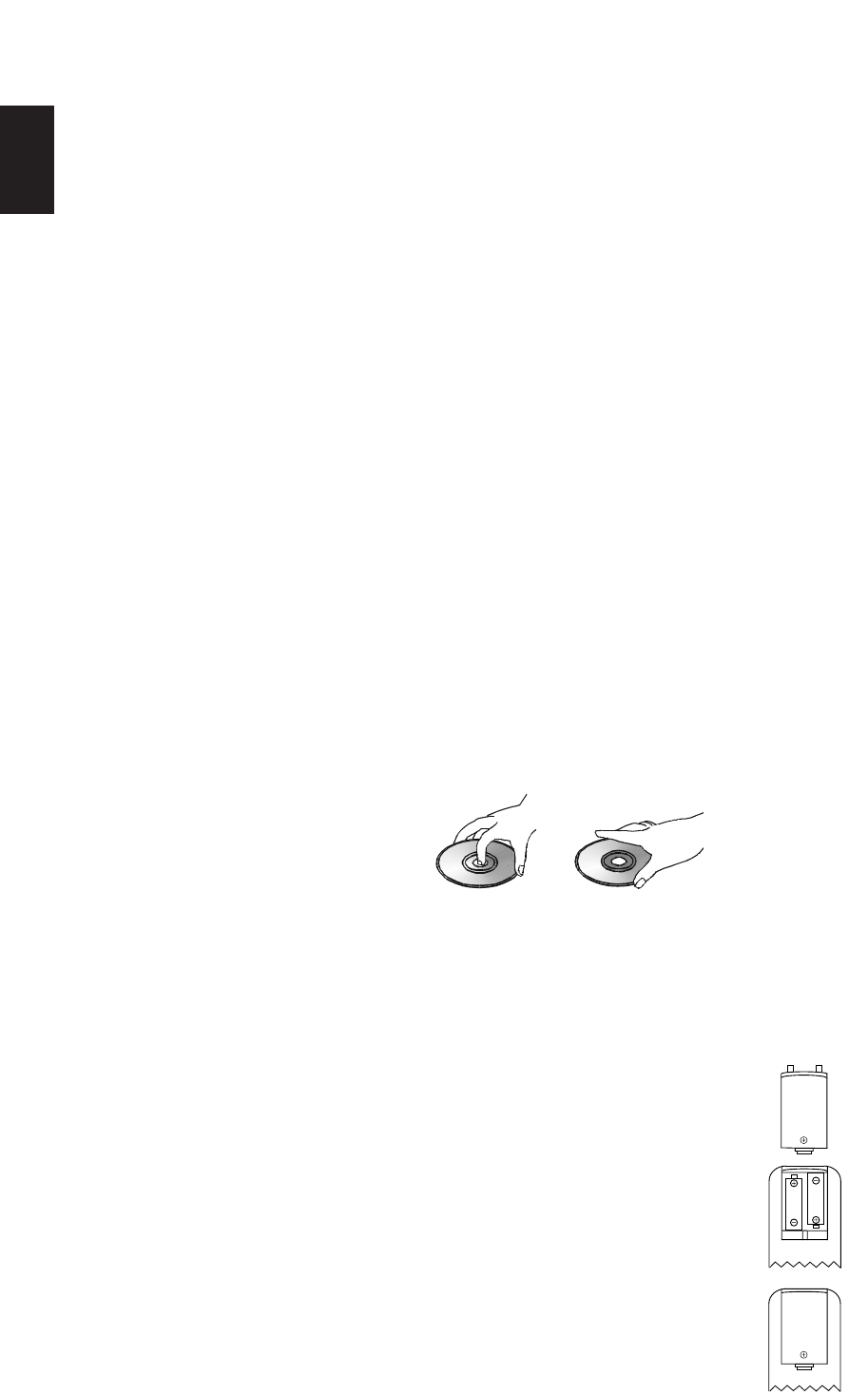
8
ENGLISH
BASIC INFORMATION
About This Manual
• The types of functions and operations
that can be used for a particular disc
vary depending on the features of
that disc. In some cases, these
functions and operations may differ
from the descriptions given in this
manual. In this event, follow the
instructions given on the screen. This
manual only covers basic disc
operations.
• For some operations, the k/ icon may
appear on the screen. This indicates
that the operation described in this
manual is not available on the disc in
the player.
• On-screen and front panel display
illustrations in this manual are purely
for the purposes of explanation. The
actual displays may differ slightly
from these illustrations.
Compatible with CD
as well as DVD
• The DVD will play any conventional
Audio CD or recordable (CD-R) or
erasable CD (CD-RW) bearing the
logos shown here, MP3, WMA
(v8 & v9) or any VCD or DVD-Video
with the region code 0 or 2.
Disc formats supported by this player
The unit can play the following disc
formats (8 cm and 12 cm size):
• DVD-AUDIO and DVD-VIDEO
• DVD-R
• DVD-RW
• DVD+R
• DVD+RW
• CD
• CD-R
• CD-RW
• VCD
• S-VCD
NOTE: Due to differences in the format
of certain discs, it is possible that
some discs may include a mix of
features that are not compatible with
the player. Similarly, although the
player is capable of a wide range of
features, not all discs include every
capability of the DVD system.
For example, although the player is
compatible with multi-angle discs, that
feature is only possible when the disc
is specially encoded for multiple-angle
play. In addition, the player is capable
of playing back both Dolby Digital and
DTS soundtracks, but the number and
types of tracks available will vary from
disc to disc. To make certain that a
specific feature or soundtrack option
is available, please check the options
noted on the disc jacket.
• Playback capability for CD-R, CD-RW,
WMA, JPEG, MP3, VCD/SVCD, DVD-
R, DVD+R, DVD-RW and DVD+RW
discs may vary due to variations in
the quality of the disc and the
recorder used to create the disc.
Disc handling precautions
• To keep the disc clean, handle the
disc by its edge. Do not touch the
surface.
• Do not stick paper or tape on the
disc. If there is glue (or a similar
substance) on the disc, remove the
glue completely before using the
disc.
• Do not expose the disc to direct
sunlight or sources such as hot air
ducts, or leave it in a car parked in
direct sunlight as there can be a
considerable rise in temperature in-
side the car.
• After playing, store the disc in its
case.
• Do not write on the label side with a
ball-point pen or other writing
utensils.
• Be careful not to drop or bend the
disc.
Disc cleaning precautions
• Before playing, clean the disc with a
cleaning cloth. Wipe the disc from
the center out.
• Do not use solvents such as benzine,
thinner, commercially available
cleaners or anti-static spray intended
for vinyl LPs.
Disc installing precautions
• Do not install more than 1 disc on
disc tray.
• Do not place the disc on the tray up-
side down.
• Do not try to close the disc tray
when the disc is not installed and
centered properly.
Regional Coding
DVD players and discs are designed
with regional restrictions which
dictate the regions in which a disc can
be played. If the region number on the
disc you want to play does not match
the region number of your DVD player,
you will not be able to play the disc.
The message “REGION ERR” will
appear in the front panel display.
The region code of this player is
indicated on the rear and on the
external packaging.
Remote Control
• Be sure to follow correct polarity
when installing the batteries as
indicated in the battery compart-
ment. Reversed batteries may cause
damage to the device.
• Use only the size and type of
batteries specified.
• Do not mix different types of
batteries (e.g. Alkaline and Carbon-
zinc) or old batteries with new ones.
• If you will not use the remote for an
extended period of time, remove the
batteries to avoid possible damage
from battery leakage and corrosion.


















